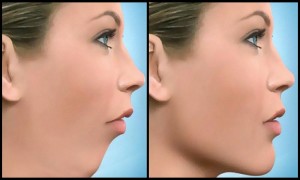Overview
Jaw surgery, also known as orthognathic surgery, corrects irregularities of the jaw bones and realigns the jaws and teeth to improve the way they work. Making these corrections may also improve your facial appearance.
Jaw surgery may be a corrective option if you have jaw problems that can’t be resolved with orthodontics alone. In most cases, you also have braces on your teeth before surgery and during recovery after surgery until healing and alignment are complete. Your orthodontist can work with your oral, jaw and face (maxillofacial) surgeon to determine your treatment plan.
Why it’s done
Jaw surgery may help to:
- Make biting and chewing easier and improve chewing overall
- Correct problems with swallowing or speech
- Minimize excessive wear and breakdown of the teeth
- Correct bite fit or jaw closure issues, such as when the molars touch but the front teeth don’t touch (open bite)
- Correct facial imbalance (asymmetry), such as small chins, underbites, overbites and crossbites
- Improve the ability of the lips to fully close comfortably
- Relieve pain caused by temporomandibular joint (TMJ) disorder and other jaw problems
- Repair facial injury or birth defects
- Provide relief for obstructive sleep apnea
Results
Correcting alignment of your jaws and teeth with jaw surgery can result in:
- Balanced appearance of your lower face
- Improved function of your teeth
- Health benefits from improved sleep, breathing, chewing and swallowing
- Improvement in speech impairments
Secondary benefits of jaw surgery may include:
- Improved appearance
- Improved self-esteem




